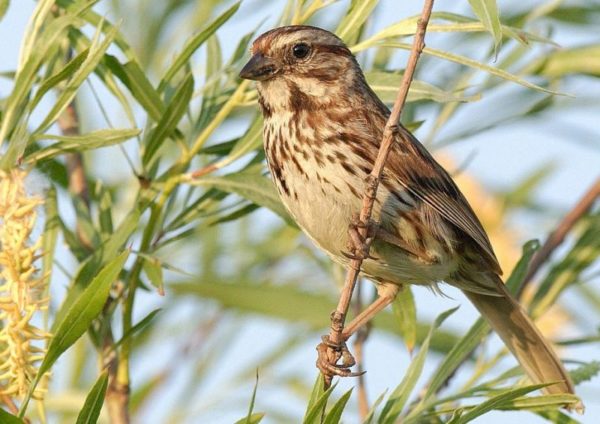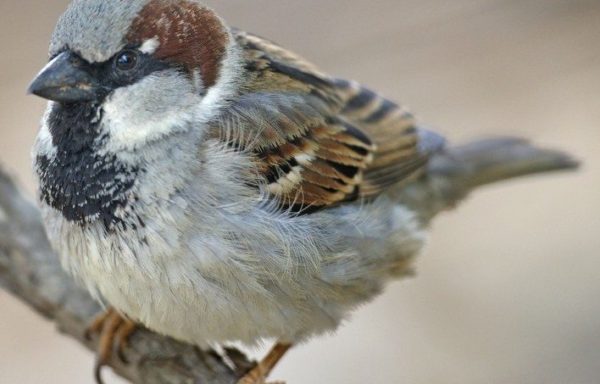Information About The Bird
Seen/Heard at
Decorah, Mississippi Flyway
Diet
Song Sparrows are ground foragers, although they will come to bird feeders. When snow and ice cover the ground, they eat seeds, grains (including corn), and dried fruit. During the summer, they add invertebrates and a wide array of fresh plant food to their diets.
Nesting
Song Sparrows breed from early April through late July. Females use grasses, weeds, and bark to build cup-shaped nests, which they line with soft materials, including more grass, rootlets, and hair. They lay one to six brown-spotted pale eggs per clutch and produce up to four broods per year. Females incubate eggs for 12-15 days and young stay in the nest for 9-12 days before fledging. Females often initiate subsequent nest and incubation before young become independent of parental care. Males provide all care for existing broods when females start a new brood.
Although both Song Sparrows and House Sparrows are called ‘sparrows’, Song Sparrows belong to the Emberizidae, or American sparrows. To learn more, visit eBird.org.
General Description
Song Sparrows have streaky brownish overparts and coarsely streaked white breasts that often converge in a dark central spot. Their pale grey heads are striped with russet and they may have a broad malar stripe or mustache.
Migration
Song Sparrows can be found in the Decorah area year-round, although some wintering finches could be migrants from colder northern areas.
Measurements
Length: 4.7-6.7 in/12-17 cm
Wingspan: 7.1-9.4 in/18-24 cm
Weight: 0.4-1.9 oz/12-53 g
Wing Design
Elliptical. Optimized for bursts of fast, tightly controlled flight. Excellent at taking off quickly, maneuvering through branches, and avoiding predators.
Citations
The Cornell Lab of Ornithology Birds of the World: Song Sparrow
Other Sparrows
| See also different: | Decorah Nest, Mississippi River Flyway, Sparrows and Towhees |



